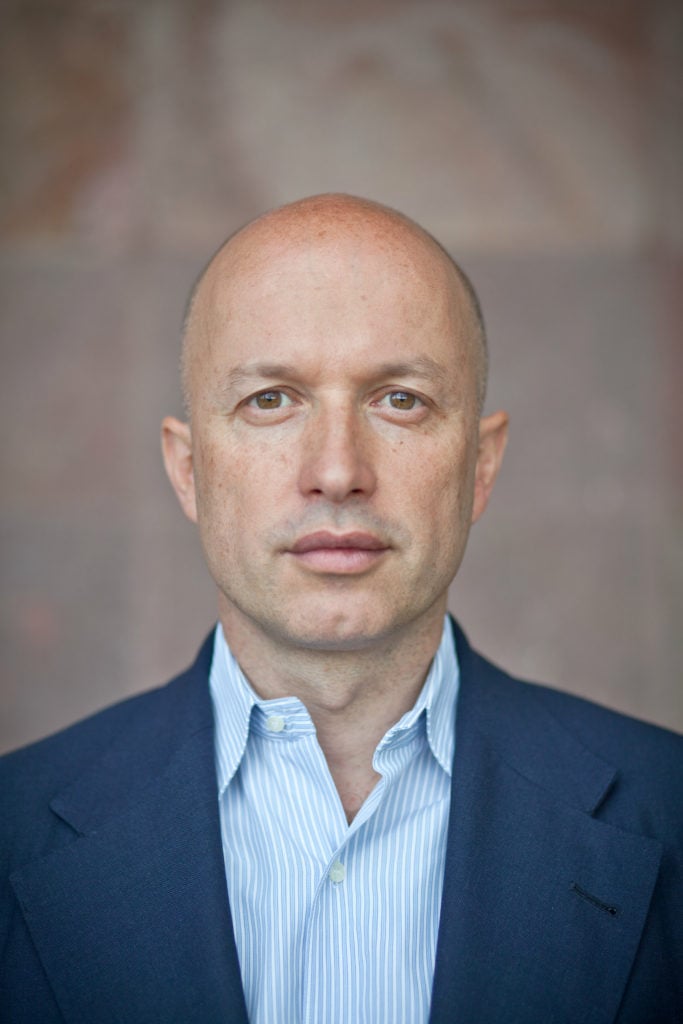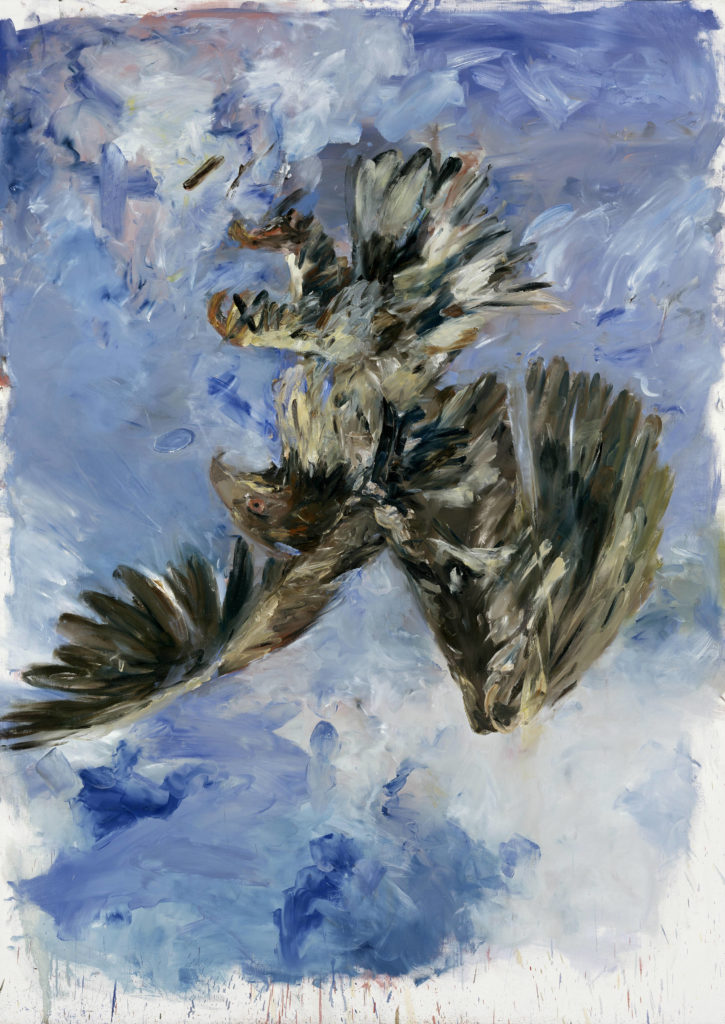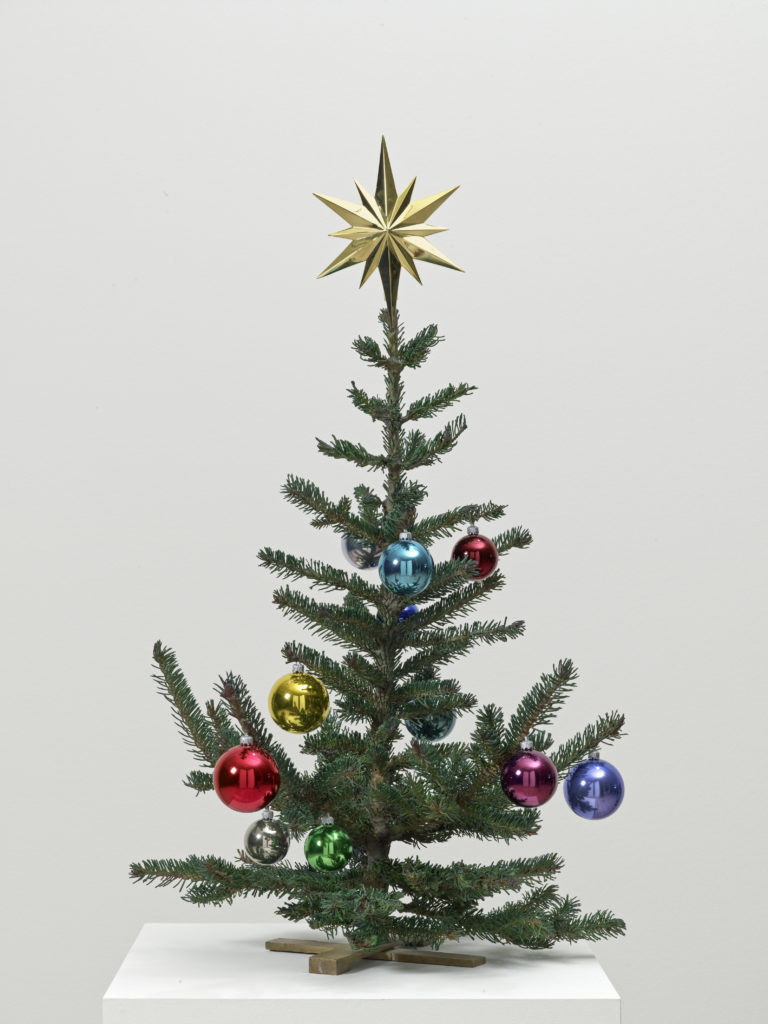Art World
The Director of the Beyeler Foundation Promises to Break Its ‘Glass Ceiling’—After Baselitz and Balthus Shows
Sam Keller says that Switzerland’s most-visited art museum will show more female artists as it expands on its 20th anniversary.

Sam Keller says that Switzerland’s most-visited art museum will show more female artists as it expands on its 20th anniversary.

Javier Pes

In just over 20 years, the Fondation Beyeler has become Switzerland’s most-visited art gallery. And it is growing, in both ambition and size.
The Beyeler’s director, Sam Keller, is overseeing the forthcoming $100 million Peter Zumthor-designed expansion, which will double the institution’s footprint by adding pavilions to complement Renzo Piano’s celebrated building.
Construction is not likely to begin until later this year at the earliest. In the meantime, however, the museum is keeping busy. We spoke to Keller, who served as the head of Art Basel before joining the Beyeler in 2008, on the eve of its big show of the work of Georg Baselitz.
Keller discusses why the museum has rejected requests to franchise, why he’s not worried about its Balthus show, and how he plans to show more work by female artists at an institution with a history as a boys’ club.

Georg Baselitz’s Fingermalerei – Adler (1972), Bayerische Staatsgemäldesammlungen, Pinakothek der Moderne, Wittelsbacher Ausgleichsfonds, München, copyright the artist, photo by Bayer & Mitko – Artothek.
When I arrived at the Fondation Beyeler, I noticed plinths being prepared in the park for your Baselitz show. Why did you want to bring the German artist’s work to Basel?
We are installing a dozen of Georg Baselitz’s sculptures in the museum and garden. Basel and Baselitz and Beyeler have a special relationship. The artist had his first institutional exhibition at the Kunstmuseum Basel and two important shows at Galerie Beyeler. He is well represented in local private and museum collections. The artist and his wife Elke also have a house and a studio in the city. Still, he has not had a solo exhibition in Switzerland since 1990.
So we had the idea to organize a retrospective on the occasion of his 80th birthday, with over 100 paintings and sculptures at Fondation Beyeler and his drawings and prints at the Kunstmuseum Basel. Georg Baselitz is one of the most interesting artists of the past 50 years and made a mark in art history.
We were able to unite most of the important works and some rarely exhibited ones from private collections. There will also be some new paintings publicly displayed for the first time. I think this will be an extraordinary occasion to see and study the best of Baselitz. The artist is thrilled.
Your previous show was called “Beyeler Collection/Cooperations” and it featured works lent by collectors, artists, and artists’ estates. What was the idea behind the exhibition?
Last year was our 20th anniversary. We wanted to use the opportunity to look both forwards and backwards. We thought, “OK, let’s make a trilogy of exhibitions.”
First, to show the original collection as presented at the opening of the museum [in 1997]; another to show how we integrate new acquisitions into the historical collection [“Remix”], and the third part [“Cooperations”], to look to the future and ask how a museum collection could grow through collaborations with artists, artists’ estates, and major private collections. We asked if our partners would be willing to lend the works we miss in our collection. Some have even offered to extend their loans or make them permanent.
Did it take long to organize?
Actually, it was done very fast, mostly after the summer holidays. Basically, we just called people up. Sometimes it’s good to do things fast, even if it increases the risks. “Collaborations” demonstrated the high level of trust and support of our partners.
It sounds like something public museums that are older, and more bureaucratic, take years to organize. But at the Beyeler you just cut to the chase.
We are still young and dynamic. Let’s see how we are when we are 100 years old.
When I say that we put this show together in a few months, such a thing would not have been possible without years of positive experiences forging friendships with artists and collectors locally and internationally.

A rendering of the forthcoming Zumthor Pavilion at the Beyeler. Photo courtesy of the Beyeler Collection.
The Beyeler is expanding, adding more parkland with pavilions designed by the architect Peter Zumthor. What excites you most about the expansion?
First of all, generally, I am critical of museum expansions. When I came to the Beyeler 10 years ago, I thought the museum was perfect and I still think it is one of the most beautiful in the world. Ernst Beyeler, the founder, and the architect Renzo Piano created a landmark. They already extended the museum and had ideas for future expansions.
But the world is changing, art is changing. The collection is growing and so are the needs of the public. We are much more active as a museum, with exhibitions, cultural events, and education. We have many more visitors than the museum was conceived for. The park is getting used much more for activities ranging from intimate art performances to concerts with thousands of young people. Others still come to watch the cows and the sheep and the landscape.
So in order to provide contemplation and action at the same time, we will double the size of the park, opening a historic private garden to the public. We are also excited about the prospect of a garden pavilion for cultural events. Right now, as we don’t have an auditorium, we have to do events in the galleries.
Adding exhibition space is needed because such a world-class collection deserves to be seen. My heart bleeds every time I go to the museum’s storage. In order to show more, we rehang the collection three times a year, which is a giant effort. With the expansion, we will be able to display more of works from the Beyeler Collection and the long-term loans from artists and partners like the Daros Collection and the Anthax Collection Marx. We will be able to showcase more art works in a different, more experimental way.
Around the world over the past decade, a number of private collectors and city mayors have built high-profile museums, or aspired to do so. I imagine many come to the Beyeler for a masterclass. Have you been invited to export the “Beyeler brand” abroad?
It is true that many colleagues come to study the Beyeler as an example of good museum architecture. We show them what we can and we all learn from one another. But we have no intentions of exporting the Beyeler.
I think branding is overvalued, especially in culture. We are not keen to expand the brand, but we want to expand the reach of art. Art is about experiencing, not branding. It is not the right strategy for us to have other Beyeler branded buildings.
For us, the Beyeler is not only where our building is, but also where our curators and conservators are active. The first year I came to work here, we had about a dozen invitations to do a Beyeler in other cities. Probably they were thinking that as Art Basel has created sister events in America and Asia, the Beyeler will do the same, since both were founded by Ernst Beyeler and run by me. But we will not be exporting the Beyeler in such a way.

Claude Monet, Le bassin aux nymphéas (1917–20) and Ellsworth Kelly, White Ring (1963), copyright the artist, photo by Serge Hasenböhler.
If I were to sum up the Beyeler for someone who has never visited, I’d say it’s the only museum where you can see Monet’s Water Lilies in the gallery and Philippe Parreno’s Water Lilies in a real pond framed by a picture window. I understand Parreno’s Water Lilies are about to be conserved. Is it higher maintenance than his conceptual Christmas tree, which you display every December?
Some of the works in the collection need no care and some need intensive care. If you have an artwork that is working 24/7, which is exposed to nature by being in a pond with frogs and ducks, it needs regular care. But considering it was created for a [temporary] exhibition and it was an experiment, it is very solid.
Other favorites of the public in our garden are Alexander Calder’s Tree and Ellsworth Kelly’s White Ring. They all regularly get taken care of by our conservators. More than half of our visitors are visiting from abroad and are disappointed if some of our iconic works, such as Rousseau’s large jungle painting, Giacometti’s large figures, or the Rothko Room are not on display.

Philippe Parreno’s Fraught Times: For Eleven Months of the Year It’s an Artwork and in December It’s Christmas (April), no 5 (2011), courtesy Fondation Beyeler, copyright the artist, photo by Robert Bayer.
The Beyeler’s collection and its exhibitions are a bit of a boys’ club. I know it has great works by Louise Bourgeois and co-organized a terrific Marlene Dumas show in 2015, but these feel like exceptions. Will you be showing more female artists in the future? There were only two in “Cooperations.”
When I came to the museum, there were no female artists in the collection and none had had a solo show. So we changed that. Women are still underrepresented in our collection and program, which are mainly 20th century. Now we live in the 21st century and it should be a natural thing to have gender equality. We’re working to get there. Expect to see more.
Can you name female artists who would be a good fit in the Beyeler’s collection?
Louise Bourgeois and Marlene Dumas and Jenny Holzer are important in our contemporary collection. There are a dozen other female artists who we are in contact with for the collection and exhibitions. We will communicate about them when it is time.

Balthus’s Passage du Commerce-Saint-André (1952–54), © the artist estate, photo by Mark Niedermann.
After “Baselitz,” the Beyeler is presenting a big Balthus show. Has the recent moral panic about a painting of a young girl on view at the Met in New York had a ripple effect in Switzerland?
Not so far. Balthus lived and worked in Switzerland until his death, but this is the first exhibition of his work in Basel. There are understandably some misunderstandings about the erotic content in Balthus’s paintings. The Swiss public is generally open-minded and tolerant, as are the Europeans who visit. The only time we had negative remarks was by a French animal activist club during the Maurizio Cattelan show. We will see how the public and press react to Balthus.
The museum is a forum to challenge and discuss conventions. It is fine to criticize and question art but not to forbid. I think it is the role of art to show what is in the hearts and minds of artists—this is often not what we like to see, but what we need to see.
Personally, I am against censorship and disagree with those demanding to remove art which is disturbing them. It is hypocritical to attack artists and museums for something that is going wrong in society. I doubt hiding works of art will help us in addressing the real problems.
“Georg Baselitz” is on view at the Fondation Beyeler, Baselstrasse 101, Basel, Switzerland, January 21–April 29, 2018. It will travel to the Hirshhorn Museum and Sculpture Garden, Independence Avenue and 7th Street, Washington, DC, June 21–September 16, 2018
“Georg Baselitz: Works on Paper” is on view at the Kunstmuseum Basel, St. Alban-Graben 16, Basel, Switzerland, January 21–April 29, 2018